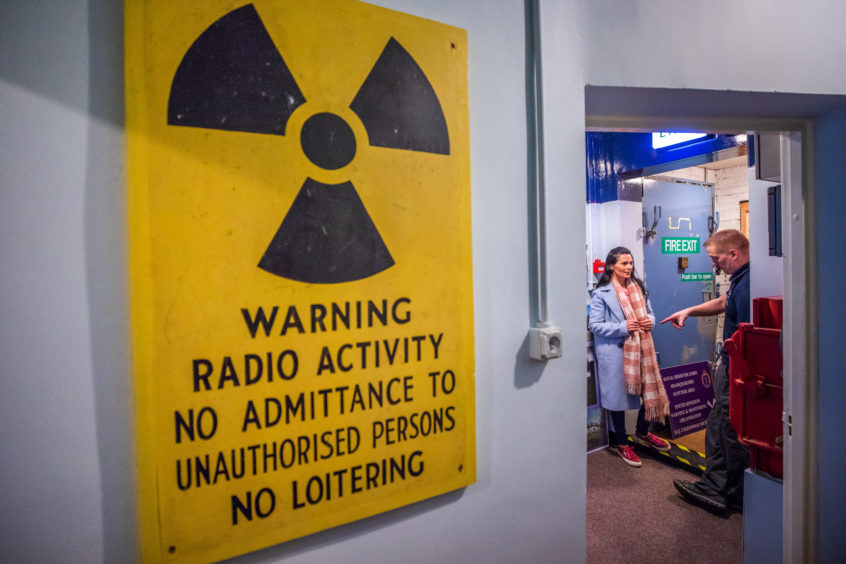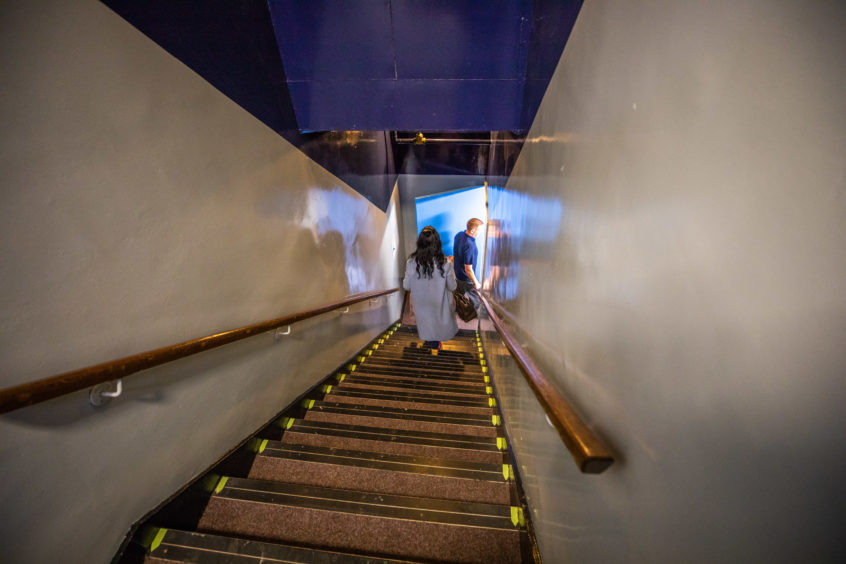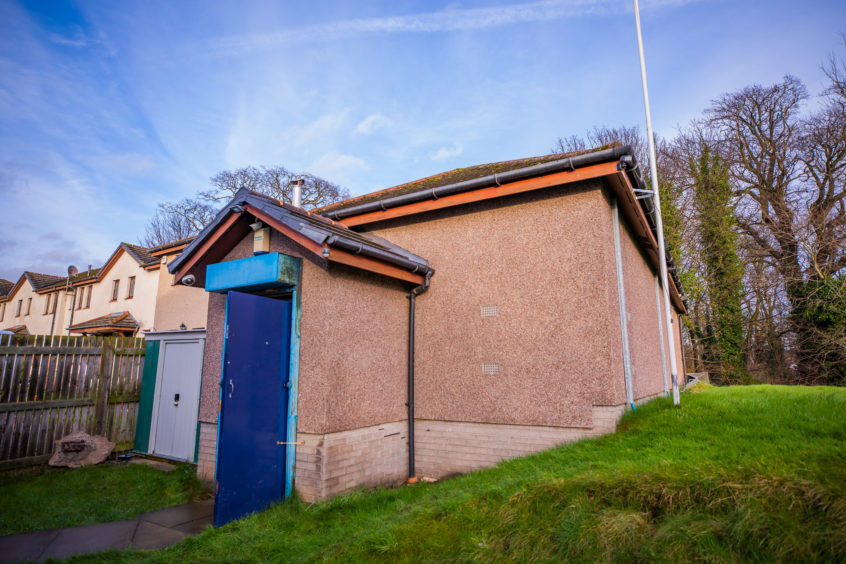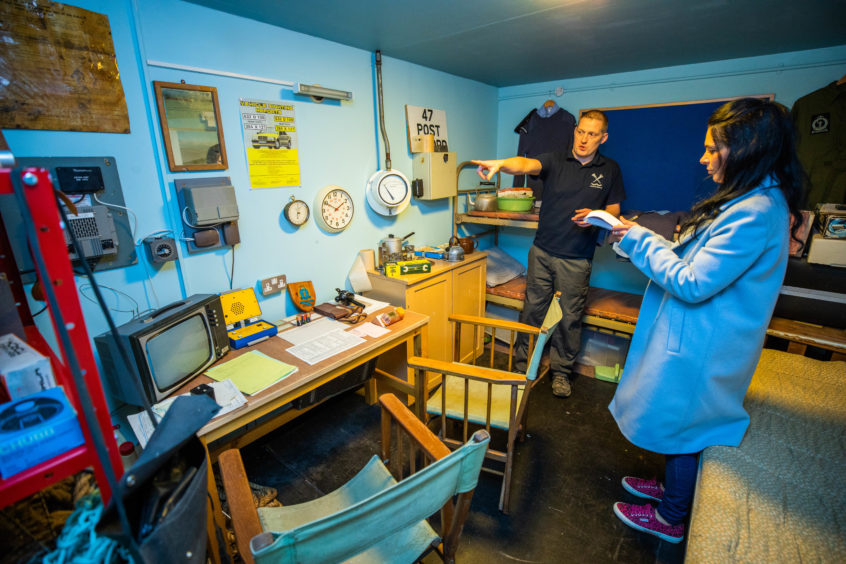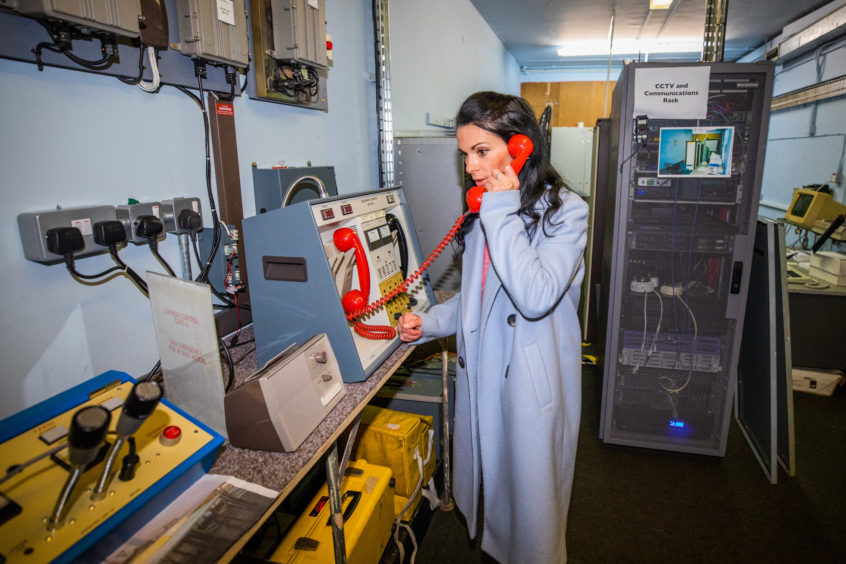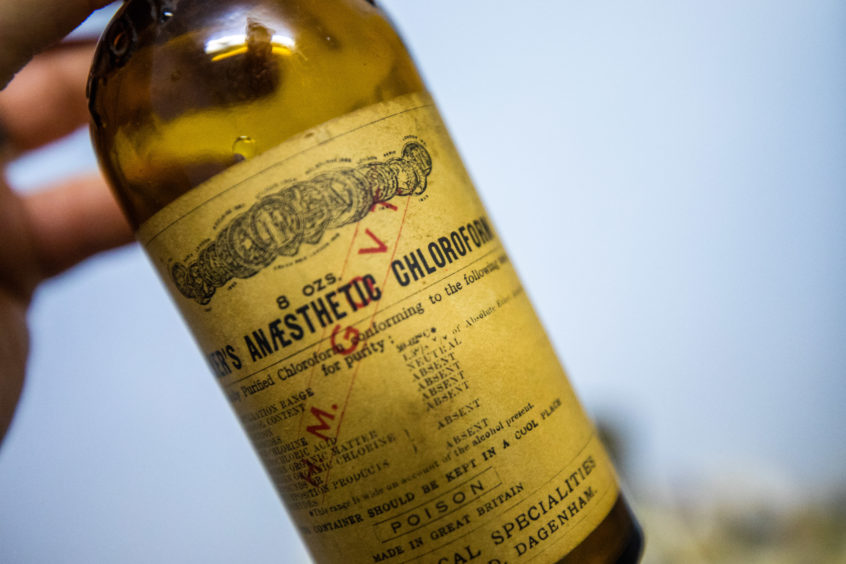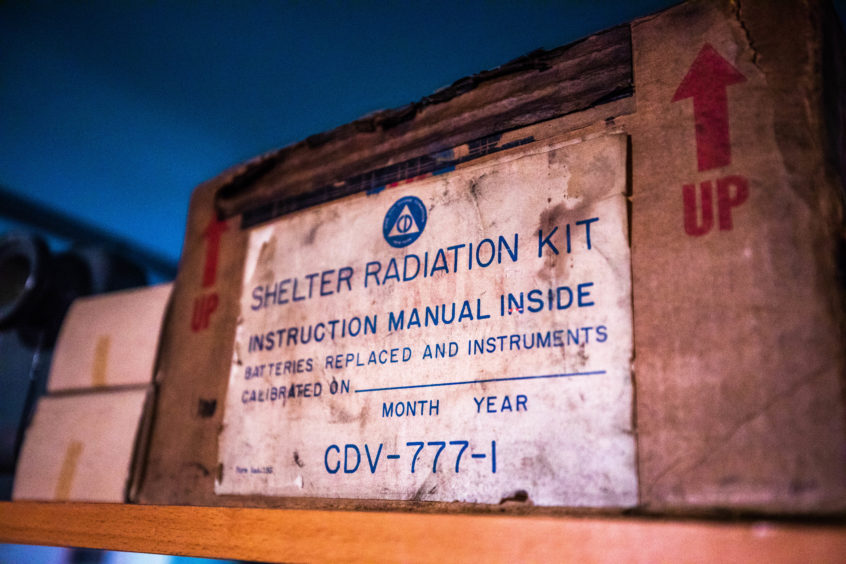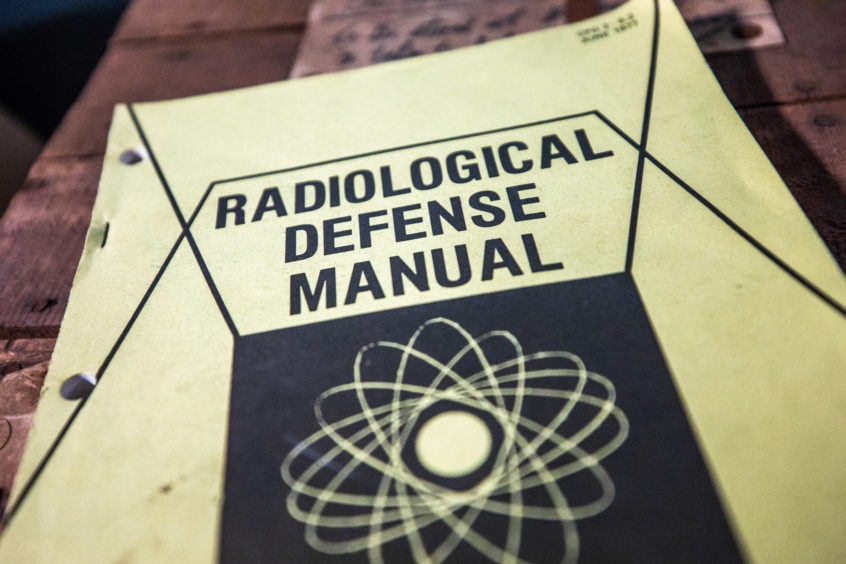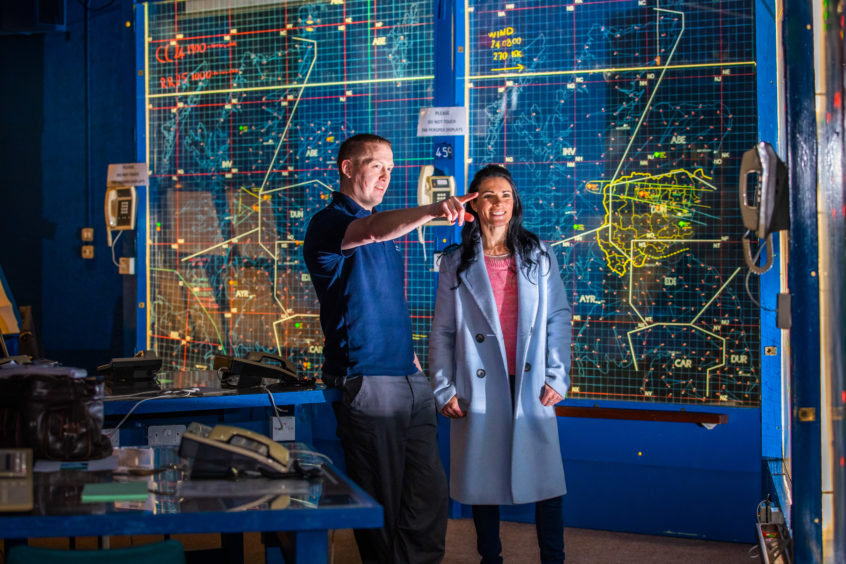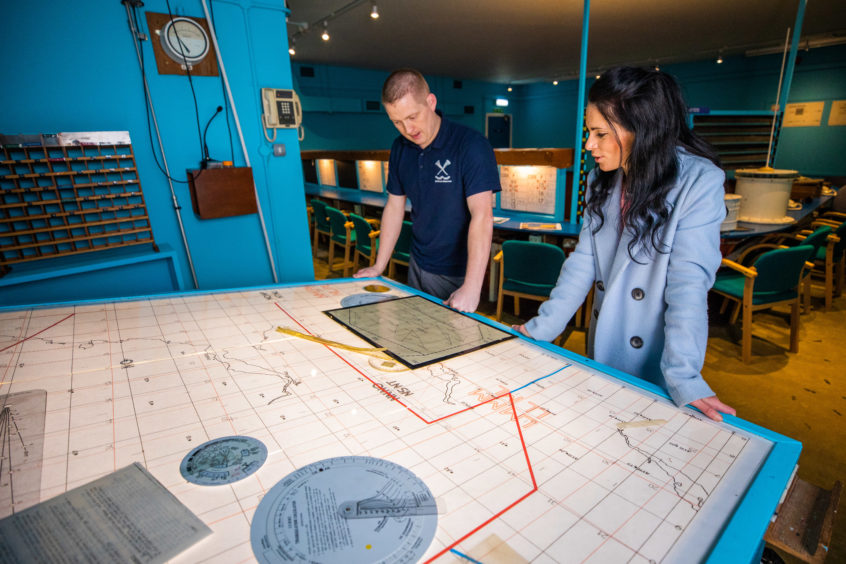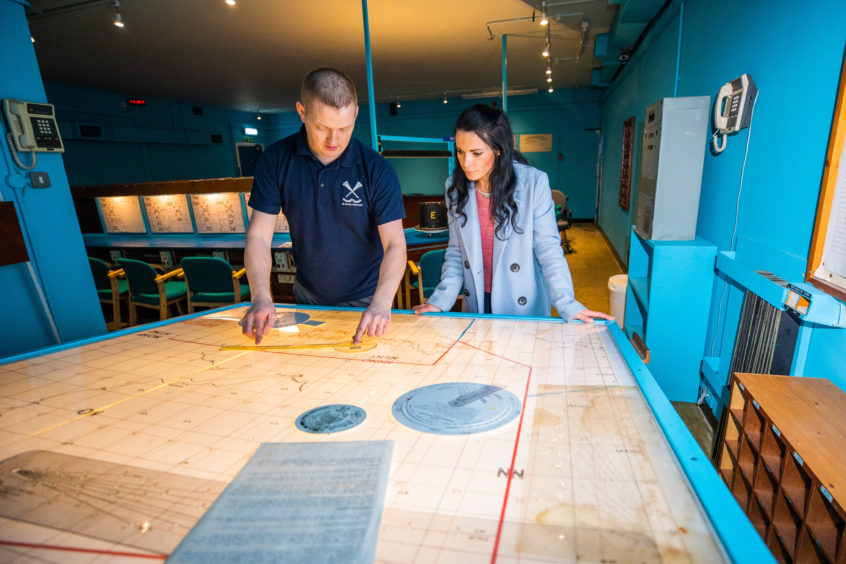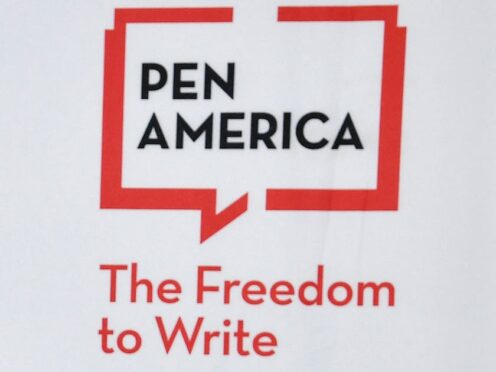Dundee’s nuclear bunker gives an amazing insight into a world preparing for the worst, as Gayle discovers
It screams like a banshee, rising and falling in pitch, sending shivers down the spine…
Thankfully, the air-raid siren that was wailing in Dundee last Friday afternoon wasn’t heralding an impending nuclear attack.
The test alarm had been set off by Steve West, co-director of the charity 28 Group Observed, a team of volunteers who maintain the city’s secret nuclear bunker.
“Everything in here beeps or makes a loud noise!” says Steve, as the unnerving wailing noise peters out.
The bunker, buried underground on Craigiebarn Road, was established in 1962 to measure nuclear blast waves and radioactive fallout in the event of an attack by the Soviet Union.
It was one of Scotland’s five major headquarters (there were 31 across the UK) linked to a network of 1,563 smaller monitoring posts constructed by the British government 15 miles apart, including at Cupar, St Andrews, Glamis and Arbroath.
Video of the bunker from a Courier article in 2017 is above this article
VIDEO: Take a guided tour of the secret nuclear bunker buried under Broughty Ferry
Until 28 years ago, the Dundee control centre would have been on the front line in the event of a nuclear attack on the UK, providing a place for 80 Royal Observer Corps (ROC) volunteers.
They would have been sealed into this air-tight underground warren, which was capable of keeping them alive for at least a month in the event of such an attack. Scary stuff.
These civilians would have been tasked with collecting data from monitoring stations scattered across the country.
So secret was the bunker that few people knew it existed. But throughout the Cold War, it was opened for exercises to simulate nuclear scenarios.
As the Cold War came to an end, and the Soviet Union collapsed, however, the ROC was stood down in 1991 and the sites shut.
Many were demolished, but some, like the one in Dundee, have been preserved by private individuals or trusts.
Indeed, 28 Group Observed has spent more 15 years restoring the Craigiebarn site, the only remaining ROC sector bunker left in its original condition in the UK.
Like many people, I wasn’t even aware of its existence. That’s perhaps because it’s not well publicised and it’s tricky to find.
From the outside, the bunker is decidedly grim-looking – a low-rise concrete building with a blue metal door. Alongside it, there’s a large, raised area of grass with some metal vents, but most folk would never guess what lies beneath.
The bunker burrows 25ft underground and is an impressive three storeys deep.
Being a director of 28 Group Observed is something close to Steve’s heart. His grandfather was a caretaker for the bunker and was involved in winding the place down. Steve, 37, who describes himself as a “bit of a bunker nerd” enjoyed his first tour there with his grandad aged 11.
“The bunker was designed to be self-contained for months after a nuclear strike,” he tells me as we pass through a blast-proof door, into the decontamination chamber and down a steep staircase into the dark shaft of the bunker itself.
“We’ve tried to preserve as much as possible to show people what it would’ve been like.
“If it worked in 1991, it works today.”
A massive generator whirs away in the corner of the bleak plant room, while bunk beds line the single-sex dorms. Old uniforms and radiation masks hang from walls and chairs.
The communications room is a big highlight of the tour. It boasts a pair of actual red “hotline phones” – which, of course, I can’t resist lifting to my ear.
These would issue a national “attack warning red” verbal message from the strike command centre at RAF High Wycombe in the event of a nuclear attack, or if there were signs of a ballistic missile.
“A duty police officer would rebroadcast the message, activating four-minute warning sirens,” says Steve.
“It basically meant there were four minutes until a missile landed.
“The sirens would have alerted the public to the imminent arrival of nuclear bombs. They could be heard up to 10 miles away.”
Peeking into a cupboard in the bunker’s first-aid room, I discover an original bottle of chloroform, although the liquid has long since evaporated.
Going deeper into the bunker, we come to a room with a shelter radiation kit in a cardboard box, then Steve points out a hand-operated siren – which of course, I take great joy in operating!
The radio room boasts a mind-bogging array of technology, including an old Tele-talk and carrier receiver, which Steve switches on, allowing us to listen to recordings of simulated attacks.
The grand finale of the tour is the huge, amphitheatre-like Sector Operations Room.
“This was where everything was plotted,” says Steve.
“Before it was abandoned in 1991, it would have been brimming with state-of-the-art computer technology and systems. Today, it boasts huge Perspex boards with simulated maps of fallout from nuclear strikes on Scotland.”
The Netflix series Chernobyl has triggered a lot of recent interest in the bunker, says Steve, and demand for tours has rocketed.
While utterly fascinating, I can’t stop wondering what life would have been like for the 80 folk down here in the months following a nuclear attack. These people would surely be among a very small number of survivors. And what happened a few months down the line? Did they accept they would probably die a slow and lingering death, as rations diminished and radiation poisoning kicked in? It doesn’t bear thinking about.
“As for life after an attack, I don’t think it could be comprehended,” reflects Steve.
“But looking back at the attacks on Hiroshima and Nagasaki, which could be deemed as ‘small yield devices’, life continued – but with radiation effects still present to this day.”
Certainly, the tours give an amazing insight into a secret underground community that was preparing for the very worst.
info
Public tours of Dundee’s secret bunker take place on the weekend of March 20 to 22, but there are very few spaces left. To find out about upcoming tours, or to arrange a private tour, visit the 28 Group Observed SCIO Facebook page. The group is always looking for volunteers to help with ongoing maintenance and restorations.
